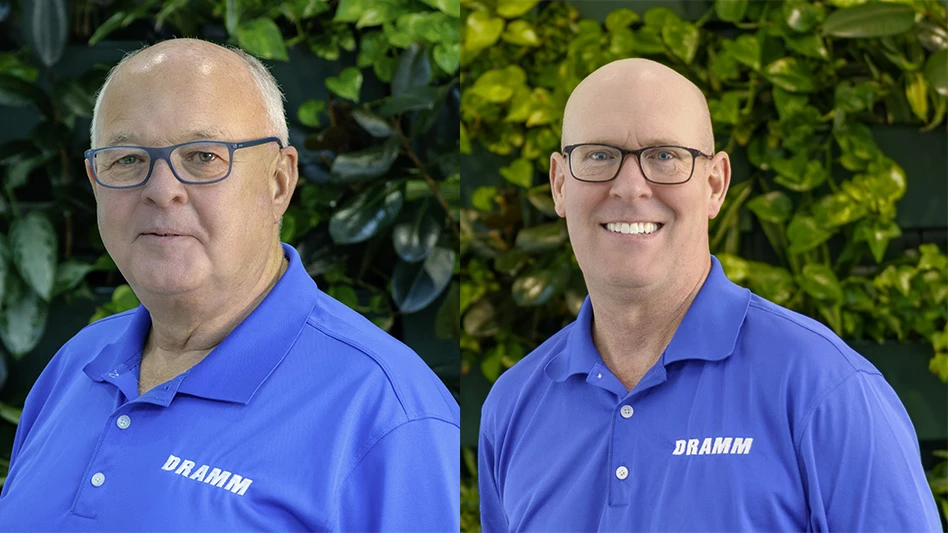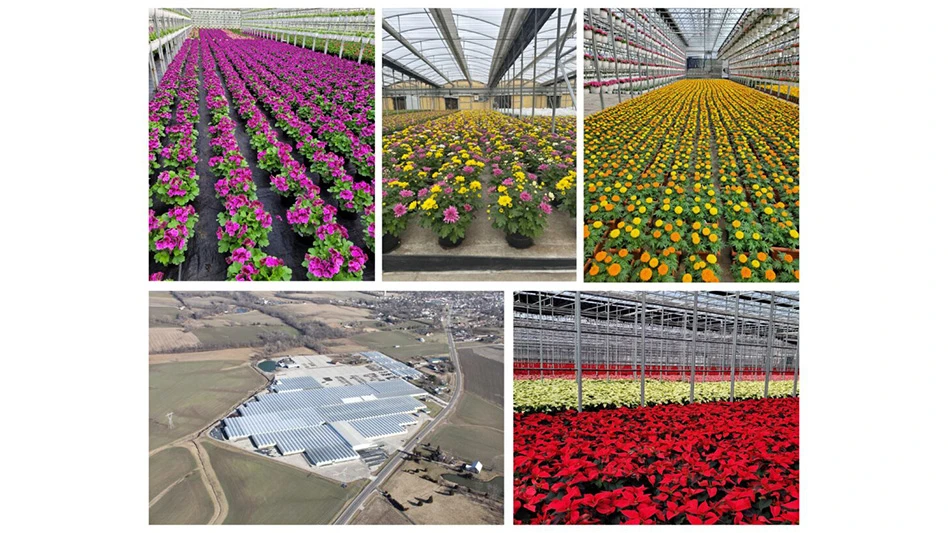
Chad Miller and his family had just moved to Amery, Wis., and the family had made friends in the neighborhood, including a woman who was about to move from her farm. It was clear even to the 12-year-old Miller that she was more than a gardening hobbyist.
“When I’d go to her house, I’d flip through her stacks and stacks of flower catalogs. Her gardens were full of cannas, gladiolus, hollyhocks and iris,” he recalls.
But when it was time to auction off the property, the neighbor couldn’t bear to see her precious flower bulbs stay with the house, fearing the new owners would not take care of the garden. So she began digging up hundreds and hundreds of bulbs — despite the fact that it was not the proper time of the year — and she gave Chad several trash bags full of them.
“I planted them, watched them grow, and that was the catalyst for it all. When most young teens at that time were buying CDs, I was buying dahlias, tulips and daffodils,” he says.
Miller didn’t come from a farming background, although his father’s family had a long legacy of farming.
“My dad grew up on a dairy farm, but he didn’t choose that as a career. Instead, he became a mechanic. But I did enjoy spending time on my uncles’ farms. I just didn’t think that’s where my career path would lead me,” he says.
Miller continued caring for his many bulb gardens, wondering if there was a chance he could start a landscape or greenhouse business.
“In high school I remember taking an aptitude test, and I ranked high in sciences and ag with art close behind,” he says.
Once his counselor convinced him to pursue a horticulture degree at college, Miller enrolled at the University of Wisconsin-River Falls.
“I thought I’d get my degree, go back home and open my own greenhouse, but my advisor and mentor Terry Ferriss encouraged me to think bigger,” he says.
Miller participated in an internship in the Netherlands, which started a fire for international travel and fueled his love for bulbs.
Ferriss suggested that Miller consider becoming a college professor and pursue a master’s degree and attend a Ph.D. program. It’s something Miller had been considering. After all, in a short time his neighbor had helped teach him about bulbs, and it was his desire to honor that special memory and teach others.
Miller received his M.S. and Ph.D. from Cornell University, and studied under Mark Bridgen and Bill Miller. He also participated in another program in the Netherlands.
And in 2011, he began teaching at Kanas State Univeristy, where he leads the Landscape Plants 1 and 2 courses, the plant propagation course, and he co-teaches an orientation-type course that prepares students on how to be a successful horticulturist.
“I basically see every undergrad that comes through the horticulture program at Kansas State,” he says.
He’s fortunate to continue his love for travel by teaching courses abroad. He’s taken horticulture students to Australia, England, Wales, the Netherlands, Belgium and France. He’s also accompanied colleagues at Iowa State to South Africa.
Taking students to other countries not only teaches them about different production methods and plants, but it also introduces them to new cultures.
“Many of our students come from a rural area — they come from high school graduating classes of 50 people. So the benefits of them traveling abroad are multifold. They’re learning more about the world around them, and seeing the many different sectors of horticulture and how they all fit together,” he says.
It’s that international aspect that may attract more students to choose horticulture as a career. Connecting with the global horticulture community and the idea of helping to change the world could be the hook the industry needs to get more young people involved, Miller says.
But closer to home, Miller is on a task force at Kansas State with Kim Williams, professor of greenhouse management, to come up with ideas on how to get in front of younger people at an early age and get them interested in horticulture.
“One idea is to partner with the Future Farmers of America organization more often because they’re well established and they have a horticulture and floriculture component,” he says.
As an industry, it’s critical that we start teaching kids about horticulture, whether it’s planting a flower in the garden or growing food. We have to get that message to the next generation as early as possible, he says.

Explore the March 2016 Issue
Check out more from this issue and find your next story to read.
Latest from Nursery Management
- Terra Nova Nurseries introduces rust-free and disease-resistant heucherella
- John T. Nickel, founder of Greenleaf Nursery Co., passes away at 89
- Three tours offered at 2025 Farwest Show
- Garden Media Group announces sixth annual Women in Horticulture Week
- Star Roses and Plants announces National Knock Out Rose Day
- The Growth Industry Episode 4: How federal budget cuts are affecting horticulture nonprofits
- Pennsylvania Horticultural Society shares top gardening trends from 2025 Philadelphia Flower Show
- California Spring Trials 2026 dates announced





